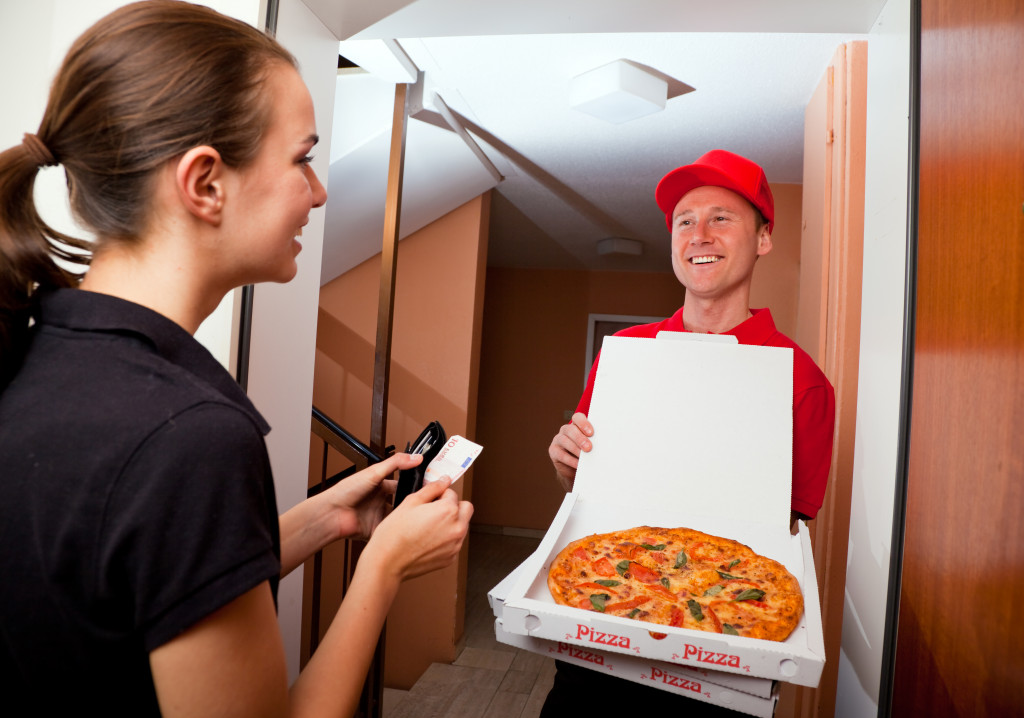In 2020, online delivery services gave restaurants, cafes, and bars a lifeline to survive despite closures and other pandemic-related restrictions.
Establishments had to shut down their doors to customers or limit capacity to help curb the spread of COVID-19. However, through deliveries, these businesses had the opportunity to continue operations and have a steady flow of revenue.
In addition, people who were staying at home and social distancing were more than willing to support their favorite stores. One survey revealed that 60 percent of all consumers in the United States were ordering delivery or takeout once a week. Meanwhile, 31 percent say that they order food at least twice a week.
The digital ordering and delivery market has been growing at a faster rate than dine-in traffic in 2014 and, because of the pandemic, its adoption only sped up. By 2030, analysts predict that delivery sales will reach $365 billion around the world.
All for Comfort
The e-commerce market offers an alternative way for consumers to shop. It provides convenience because the products are delivered right at the customer’s doorsteps. Sometimes, it also leads to money savings because consumers have more options to choose from, and they can use online vouchers and be alerted about sales. With express shipping and same-day delivery, buying from an e-commerce platform is faster, too. For the same reasons, people choose to have food delivered to their homes for convenience and speed.
During the pandemic, when many people had to work from home, home-cooking became popular again. However, not everyone has the time to make their own meals. While they are at home, many adults still have to work the same hours —or more—and have to take care of their children. Children were also home because schools were closed. Aside from work, working adults also had to assist their children learning remotely using a tablet or a laptop.
Thus, while cooking can be healthier and can save money, it is not ideal for all households. Most adults were busy during the pandemic, and will likely still not have too much free time to prepare meals three or more times every day after the current crisis is over.
Time Constraints
Employment presents challenges for working parents to fulfill chores and go to work and take care of their children.
The lack of time pushes households to increase the purchase of ready-to-eat food from grocery stores or hot meals from restaurants. There is less demand for ready-to-made food from grocery stores among households where all adults are employed. They purchase 72 percent more food from restaurants compared to families where not all adults are working full-time.

Having children also affects their food orders. Households that have children buy 19 percent more fast food and 38 percent less from restaurants. Parents typically order meals that they think their children will eat, not because it is nutritious.
Single-parents who do not have a partner to share childcare responsibilities purchase more ready-to-eat food than any other household.
What This Means for Entrepreneurs
Entrepreneurs should be paying attention to the present food trends. While the pandemic will one day end, a lot of the changes that happened over the past year will likely persist for years to come. One of them is online food purchases.
The demand for digital orders will continue for a long time, especially as new variants of COVID-19 emerge and threaten to delay the return to normal. Many employees will work from home for a more extended period or permanently. Aspiring business owners should seize a food delivery business opportunity and tap into the hot online food market.
On the other hand, restaurant owners should make their products and services available to consumers via delivery websites and apps. The additional purchase method has, in the past, proven to increase revenue for restaurants.
By partnering with a third-party delivery service, restaurants saw their sales grow by 10 to 20 percent. Pizza chains, for example, reported that customers spent more money when they were able to place their order through a website or mobile app compared to making a phone call.
Moreover, e-commerce customers do not remain online. They are more likely to visit a restaurant from which they have ordered from in the past, increasing foot traffic to the brick and mortar location, too.
The pandemic is stretching longer than many have predicted. Since the COVID-19 pandemic, many have developed new habits and routines that they will likely carry once life goes back to normal. Ordering food online will probably be one that will be retained post-COVID because of its convenience.

